Explore Thimphu - Bhutan Travel, Asia
Nestled in the heart of the Himalayas, Thimphu, the capital of Bhutan, offers a harmonious blend of tradition and modernity that captivates every visitor. As Bhutan’s political and cultural hub, Thimphu is a city where Buddhist traditions meet contemporary development, creating a unique charm that sets it apart from other travel destinations. While it boasts modern amenities like cafes, restaurants, and hotels, it has managed to preserve its cultural heritage, making it an ideal must-visit destination for travelers interested in cultural tourism.
Population: Approximately 155,000 in 2021.
Economy: Thimphu's economy is driven by tourism, and agriculture. It also benefits from Bhutan's focus on sustainable development and the country's unique Gross National Happiness approach.
Landmarks: Famous for the Tashichho Dzong, Buddha Dordenma, and the Memorial Chorten.
Bhutan
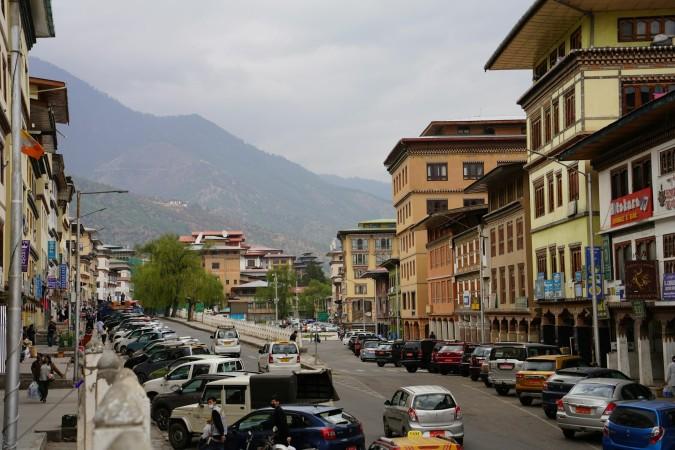
Overview of Thimphu
History & Cultural Influence of Thimphu
Thimphu’s history is steeped in Buddhism and monastic traditions with the city’s most iconic structure, Tashichho Dzong, dates back to the 17th century and serves as both a religious and administrative center. This majestic fortress is a symbol of Bhutanese heritage, housing the throne of the King and the seat of government, alongside Buddhist monasteries. The influence of Buddhism also takes roots in art, architecture, and daily life in Thimphu. Despite the influx of modern influences, the city has retained its cultural identity, making it an ideal destination for those interested in learning about Bhutan’s unique history and spiritual heritage.
Interaction with the Locals
Thimphu, the capital city of Bhutan, is home to a diverse mix of Bhutanese citizens, primarily of the Ngalop ethnic group, who follow Buddhism as their main religion. The people of Thimphu are known for their warm hospitality, deep-rooted cultural traditions, and commitment to preserving their heritage while embracing modernity. Despite urban development, the citizens continue to uphold traditional values, wearing national dress and participating in religious ceremonies and festivals that reflect Bhutan's rich cultural identity.
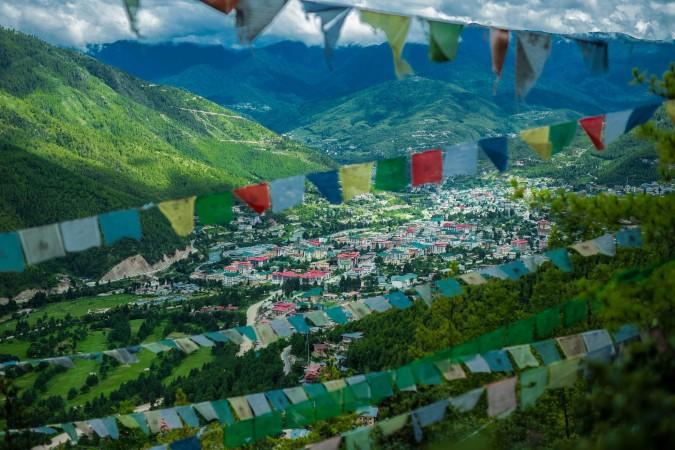
Thimphu city, Bhutan - © Passang Tobgay
Top Attractions in Thimphu
Thimphu is home to some of Bhutan's most remarkable cultural landmarks, offering visitors a range of experiences that highlight the country’s spiritual and architectural treasures.
- Tashichho Dzong: This medieval stronghold is a focal point of Thimphu, acting as both a government office and a monastery. It is particularly striking during the annual Thimphu Tshechu, when the courtyard comes alive with dancers in elaborate costumes celebrating the Buddhist faith. Visiting the dzong gives tourists a glimpse into Bhutan’s spiritual and political history.
- Buddha Dordenma: A towering statue of Buddha, standing at 169 feet tall, overlooks the city from a hilltop. Buddha Dordenma is one of the largest Buddha statues in the world and is surrounded by thousands of smaller Buddhas inside the structure. This serene location provides panoramic views of Thimphu and is an excellent spot for reflection and photography.
- Memorial Chorten: Built in memory of Bhutan’s third King, the Memorial Chorten is a spiritual center where locals come to pray and spin prayer wheels. The chorten offers an insight into the religious devotion of the Bhutanese and is a peaceful spot to observe local customs.
- Motithang Takin Preserve: This wildlife preserve is dedicated to Bhutan’s national animal, the Takin, an unusual and unique creature that resembles a cross between a goat and an antelope. Visitors can learn more about Bhutan’s commitment to preserving its natural heritage and enjoy a leisurely walk through the preserve’s peaceful surroundings.
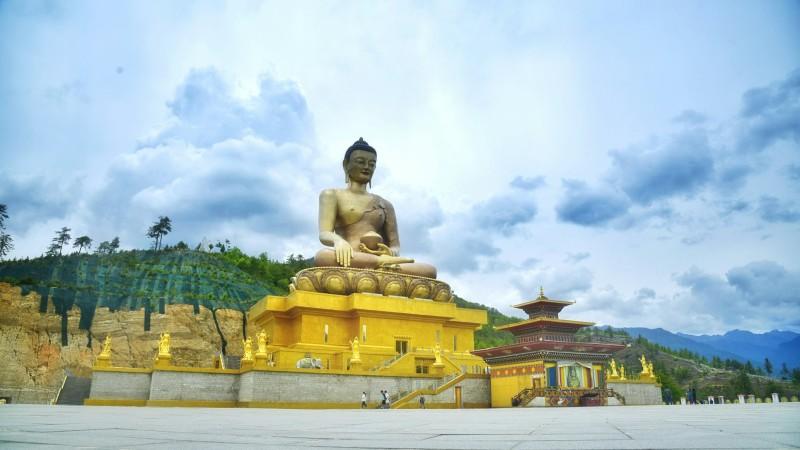
Buddha Dordenma - © vineet singh
Must-Try Dishes in Thimphu
Thimphu offers a rich introduction to Bhutanese cuisine with each Bhutanese dish is flavorful, hearty, and deeply rooted in the country's agricultural traditions. Exploring these iconic local dishes in Thimphu not only introduces you to the flavors of Bhutan but also connects you to the country’s agricultural roots and cultural traditions.
- Ema Datshi: The national dish of Bhutan, Ema Datshi, is a fiery stew made with green or red chilies and local cheese. You’ll find different variations of datshi dishes, such as Kewa Datshi (with potatoes) and Shamu Datshi (with mushrooms), but Ema Datshi is the must-try for a true taste of Bhutan.
- Phaksha Paa: Phaksha Paa is a traditional pork dish made with thin slices of pork belly, stir-fried with dried chilies and radishes. The dish is known for its rich flavors and is often served with red rice. It’s a great option for those who love meat with a spicy kick.
- Jasha Maru: Jasha Maru is a spicy minced chicken dish cooked with tomatoes, onions, garlic, and ginger. This flavorful dish is often served alongside red rice, adding a nice balance to the spiciness of the chilies used in the stew.
- Hoentay: A lesser-known dish but equally delicious, Hoentay are buckwheat dumplings filled with spinach, turnip leaves, or other local vegetables, often mixed with cheese. These dumplings are typically served during festivals or special occasions and are an excellent vegetarian option.
- Zow Shungo: Zow Shungo is a traditional Bhutanese dish made from leftover rice and vegetables, often stir-fried together. It reflects Bhutan's emphasis on reducing food waste and using all available ingredients in a sustainable way. It’s a humble but delicious dish, often prepared in Bhutanese homes.
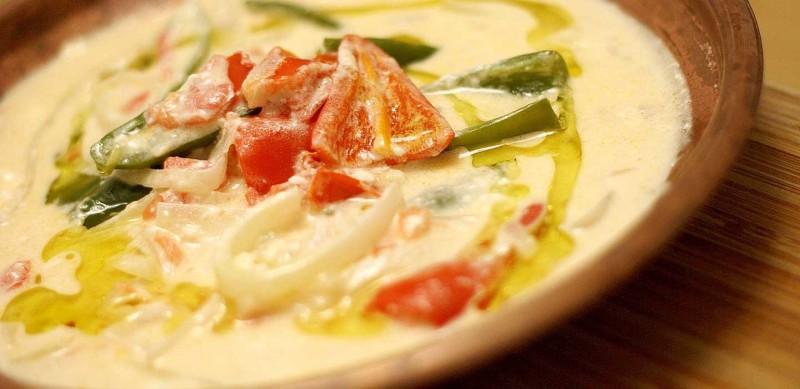
Ema Datshi - © Taste of Bhutan
Festivals & Local Celebrations
Thimphu comes to live with each vibrant festival, offering visitors a chance to witness and participate in Bhutan's rich cultural traditions. These festivals are not only religious ceremonies but also important social events that reflect the deep-rooted spirituality and joy of the Bhutanese people.
Thimphu Tshechu
The most significant festival in the capital, Thimphu Tshechu, is celebrated annually in the fall. It is a major religious event where locals gather at Tashichho Dzong to witness sacred Cham dances, performed by monks in colorful costumes and masks. These unique traditional Bhutanese dances depicting the life of Guru Rinpoche are thought to offer blessings and purification. Travelers visiting during this time can expect to see the city bustling with locals dressed in their finest traditional attire, offering a truly immersive cultural experience.
Losar Holiday (Bhutanese New Year)
Celebrated in February or March, Losar marks the Bhutanese New Year and is a time of family gatherings, feasts, and traditional rituals. The streets of Thimphu become filled with celebrations, as locals prepare special meals, perform rituals, and exchange well-wishes. Although it’s a quieter festival compared to Tshechu, visitors can still enjoy a glimpse of the country's unique New Year traditions.
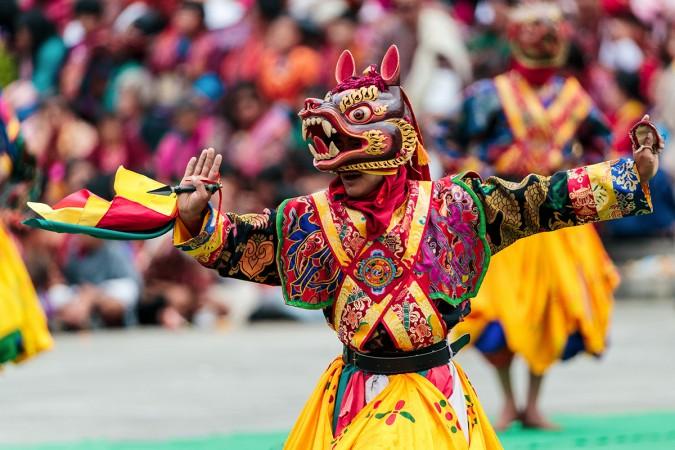
Thimphu Tshechu - © VnExpress
What to Do in Thimphu
- Hiking in Thimphu: Surrounded by scenic hills and valleys, Thimphu is a great base for hiking. Popular trails include the Wangdi Tse Hike, which offers stunning views of the Thimphu valley, and the trek to Tango and Cheri Monasteries, where visitors can explore ancient temples and enjoy the peaceful mountain scenery.
- Wellness Retreats in Thimphu: For travelers seeking a spiritual retreat, Thimphu is home to several monasteries and wellness centers offering meditation and yoga retreats. Spending time in a peaceful environment, learning mindfulness practices, or attending a Buddhist retreat is a great way to reconnect with nature and yourself.
- Experience Bhutanese Archery: Archery is Bhutan’s national sport, and watching a local archery match is a must when visiting Thimphu. Competitions are often held at the city's Changlimithang Stadium. Visitors can also try their hand at archery at designated ranges.
- Cultural Workshops: Thimphu is an excellent place to learn about traditional Bhutanese arts and crafts. Take part in textile weaving workshops or visit a thangka painting studio to see local artisans at work. The city is also known for its wood carving and metalwork, making it a perfect destination for those interested in Bhutan’s traditional craftsmanship.
Shopping in Thimphu
- Thimphu Weekend Market: Weekend Market is a must-visit spot in Thimphu for anyone looking to experience the city's bustling local scene. Held every Friday to Sunday, the market features fresh produce, spices, traditional medicines, and a variety of handicrafts. It’s a great place to shop for local textiles, yak wool products, and handmade jewelry, while also getting a taste of daily life in Thimphu.
- Craft Bazaar: This open-air market located along Norzin Lam, is a collection of stalls run by local artisans, offering a wide range of traditional Bhutanese items, including thangkas (religious paintings), ceramics, bamboo crafts, and handwoven fabrics.
- Textile Shops: Bhutanese textiles are renowned around the world for their complex patterns and brilliant colors. In Thimphu, you can visit the National Textile Museum to learn about the significance of textiles in Bhutanese culture, and then head to local shops where you can purchase handmade kiras (women’s dresses), ghos (men’s robes), and other hand woven items.
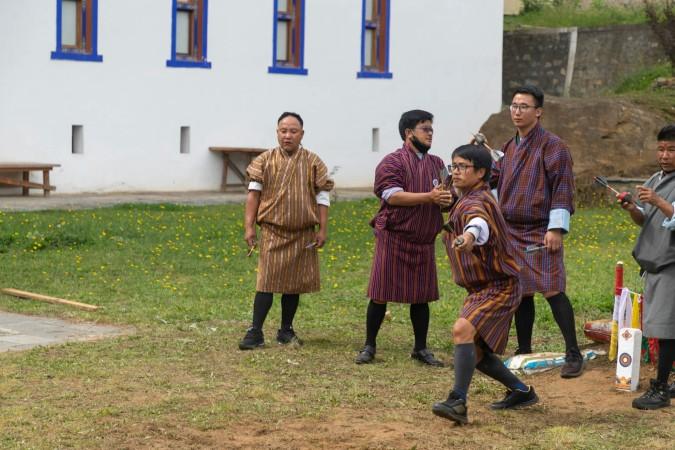
Experience Bhutanese sports like shooting khuru (dart) - © Ugyen Tenzin
Weather in Thimphu: Best Time to Visit
Thimphu's weather is influenced by its elevation and location in the Eastern Himalayas, providing a pleasant and varied climate throughout the year. Understanding the city's weather conditions can help you plan your trip at the ideal time.
- Spring in Thimphu: Spring is one of the best times to visit Thimphu with temperatures ranging from 10°C to 20°C (50°F to 68°F), making it ideal for sightseeing, hiking, and enjoying the blooming rhododendrons. This season is also a perfect opportunity for experiencing Thimphu Tshechu and outdoor activities.
- Summer in Thimphu: Summer in Thimphu is marked by the monsoon season, with frequent rainfall, particularly in July and August. While temperatures remain between 15°C to 25°C (59°F to 77°F), the heavy rain can sometimes disrupt outdoor plans. However, the lush greenery and less crowded tourist spots make it appealing to those who don’t mind a bit of rain.
- Autumn in Thimphu: Autumn is another peak season for tourists, thanks to the clear skies and mild temperatures ranging from 10°C to 22°C (50°F to 72°F). The weather is perfect for hiking, photography, and exploring Thimphu’s cultural landmarks. This season is also a great time to enjoy the city's festivals.
- Winter in Thimphu: Winter in Thimphu is cold, with temperatures dropping to -2°C to 12°C (28°F to 54°F) with snowfall is common in January, adding a magical charm to the city. Although it’s the off-season for tourism, this is a great time to visit if you enjoy the tranquility and snow-covered landscapes.
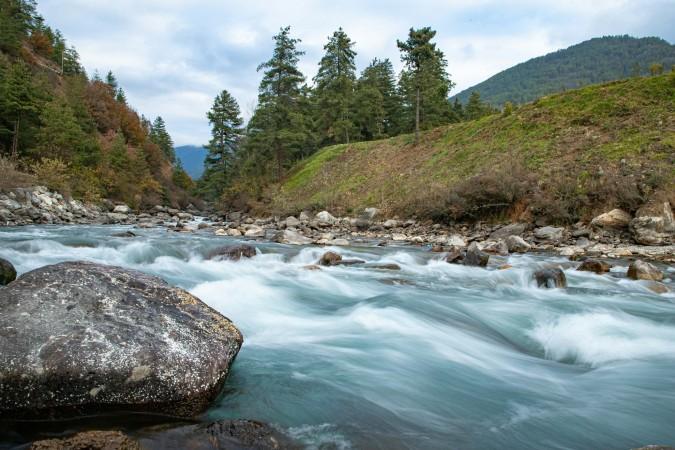
A clear day for a natural walk to Thimphu River - © Ugyen Tenzin
Essential Travel Information
Getting Around Thimphu
- Walking: Thimphu’s city center is compact, and many attractions, such as Tashichho Dzong and Memorial Chorten, are within walking distance. Walking is an excellent way to explore the city at your own pace and experience the local lifestyle.
- Taxis: Taxis are the most common form of transportation in Thimphu and are readily available throughout the city. They are relatively affordable and can be hailed on the street or booked in advance. Most taxis don’t use meters, so it’s advisable to agree on a fare before starting your journey.
- Public Buses: Thimphu has a public bus system operated by the Bhutan Post that connects different parts of the city. The buses are affordable, but they may not be the most convenient option for tourists as schedules can be infrequent and routes may not cover all tourist spots.
- Car Rentals: For those who prefer more flexibility, car rentals are available through tour operators or agencies in Thimphu. However, it’s worth noting that Bhutan’s winding mountain roads can be challenging to navigate, so hiring a car with a local driver is a safer option for exploring areas outside the city.
ATM & Banking Services
Thimphu offers modern banking services, with ATMs available throughout the city that accept most international debit and credit cards, making it easy for tourists to access cash. While cash is widely used, especially in smaller shops and markets, some larger hotels and restaurants do accept credit cards, though it's always best to check beforehand. For currency exchange, visitors can easily convert foreign currency at authorized exchange counters in the city.
Where to Stay in Thimphu
- Luxury Hotels: For travelers seeking a high-end experience that provide top-tier services, including spa facilities, fine dining, and spacious rooms, Thimphu offers several luxury stays that combine modern amenities with stunning views of the Himalayan landscape.
- Mid-Range Hotels: For those wanting a balance between comfort and affordability, mid-range hotels are a great option. These properties offer comfortable rooms with modern conveniences, friendly service, and often feature local designs and decor. Mid-range accommodations give travelers a cozy stay without the higher price tag, making them ideal for families or couples.
- Budget Lodgings: Budget-friendly accommodations in Thimphu include guesthouses and smaller hotels, which offer basic but comfortable amenities at an affordable rate. These places are perfect for budget-conscious travelers who want a clean, simple place to stay while exploring the city.
- Homestays: For a truly authentic experience, homestays provide the opportunity to live with local families, participate in everyday Bhutanese life, and enjoy home-cooked meals. Staying at a homestay allows travelers to immerse themselves in the local culture and traditions, offering a unique and enriching experience.
Articles for you
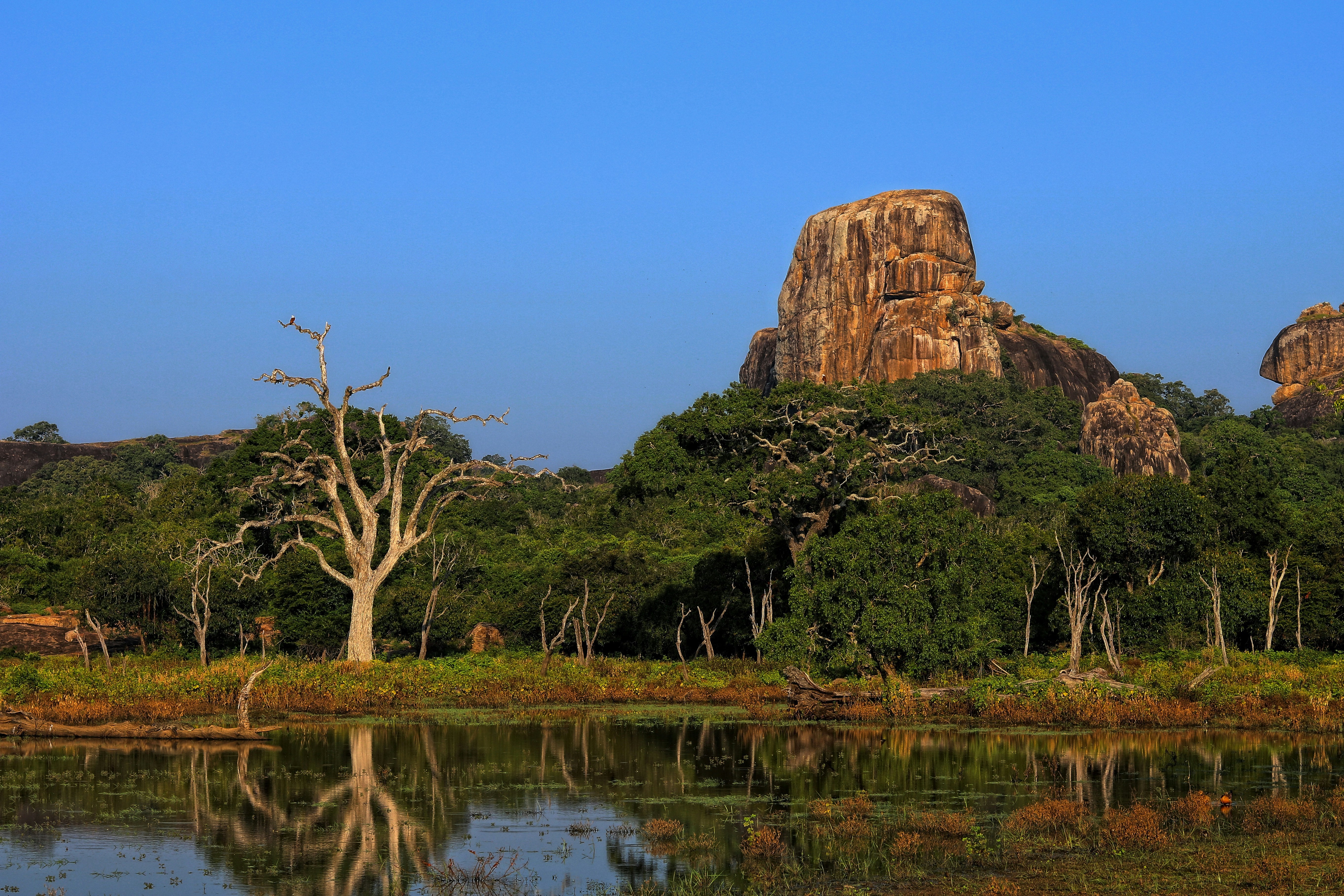
Explore Yala National Park - Sri Lanka Travel, Asia
Tucked away in Sri Lanka’s southeastern corner, Yala National Park is where wild nature meets deep tradition. Known worldwide for its leopard population, the park is also home to elephants, sloth bears, crocodiles, and hundreds of bird species. Beyond wildlife, Yala opens doors to a cultural landscape dotted with ancient temples, Buddhist ruins, and coastal villages. For travelers seeking more than just a safari, Yala offers a chance to explore eco-tourism, local communities, and sacred heritage sites.
Population: The Yala National Park area doesn’t have a human population.
Economy: The economy around Yala National Park thrives on a blend of eco-tourism, agriculture, and local services. Safari tours, eco-lodges, and cultural experiences drive steady income for nearby towns like Tissamaharama and Kataragama, supporting thousands of families.
Landmarks: Famous for Block I of Yala and wildlife encounters, including elephants, sloth bears, crocodiles, and exotic bird species.
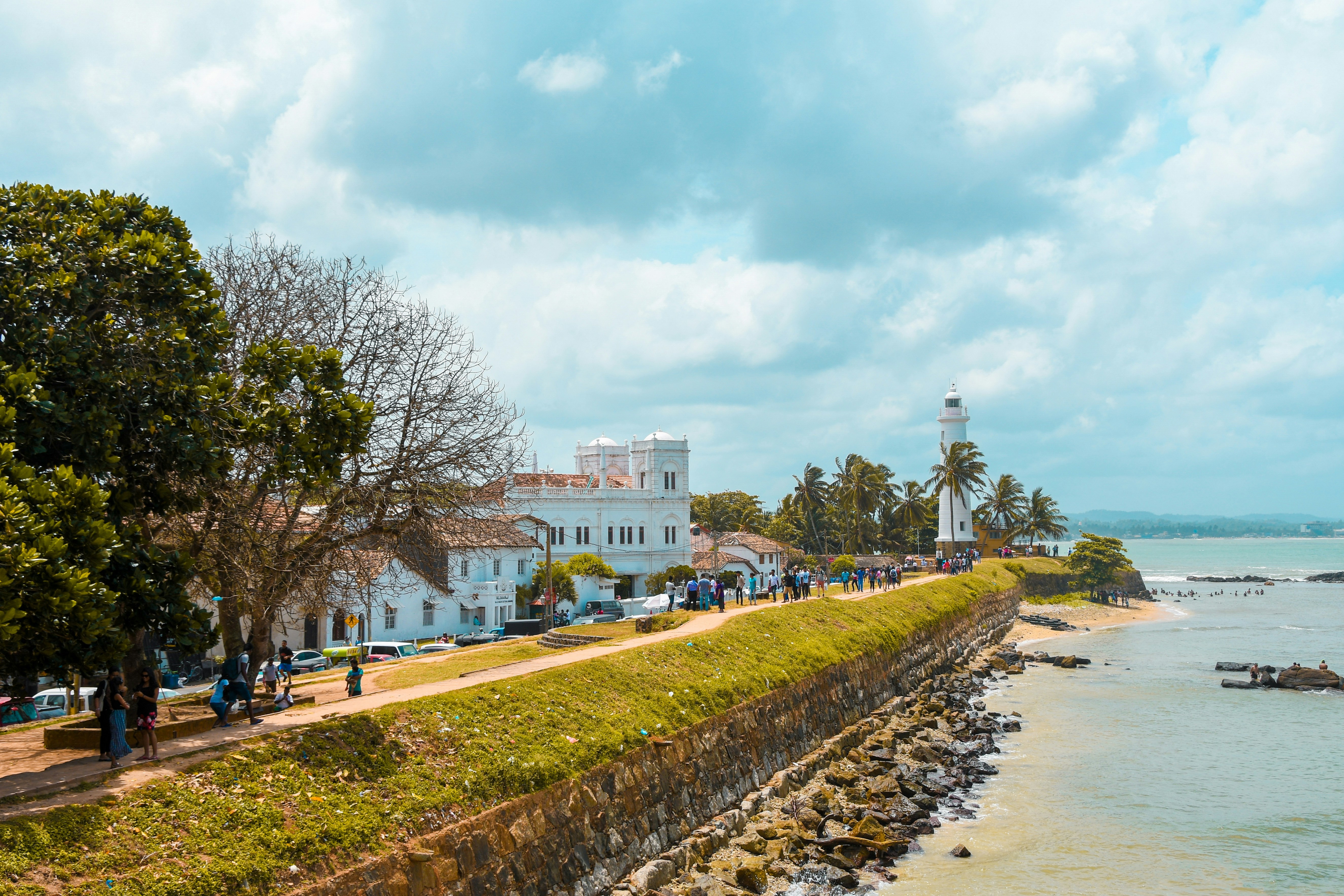
Explore Galle - Sri Lanka Travel, Asia
Nestled on Sri Lanka’s southern coastline, Galle is a vibrant city where history meets the sea. Its cobbled streets, colonial architecture, and serene beaches make it a must-visit destination for travelers seeking a blend of culture, adventure, and relaxation. A UNESCO World Heritage site, Galle captivates visitors with its Dutch Fort, bustling markets, and friendly locals. Whether you’re exploring the ramparts at sunset or savoring fresh seafood by the shore, Galle promises an unforgettable journey into Sri Lanka’s heritage.
Population: Approximately 113,000 in 2023.
Economy: Galle’s economy thrives on tourism, trade, and fisheries. The city’s historic fort, colonial architecture, and coastal charm draw thousands of international visitors each year, making tourism its main economic driver. Fishing remains vital for local livelihoods, supplying fresh seafood across the region.
Landmarks: Famous for the Galle Fort, Dutch Reformed Church & Maritime Museum, and Unawatuna Beach.
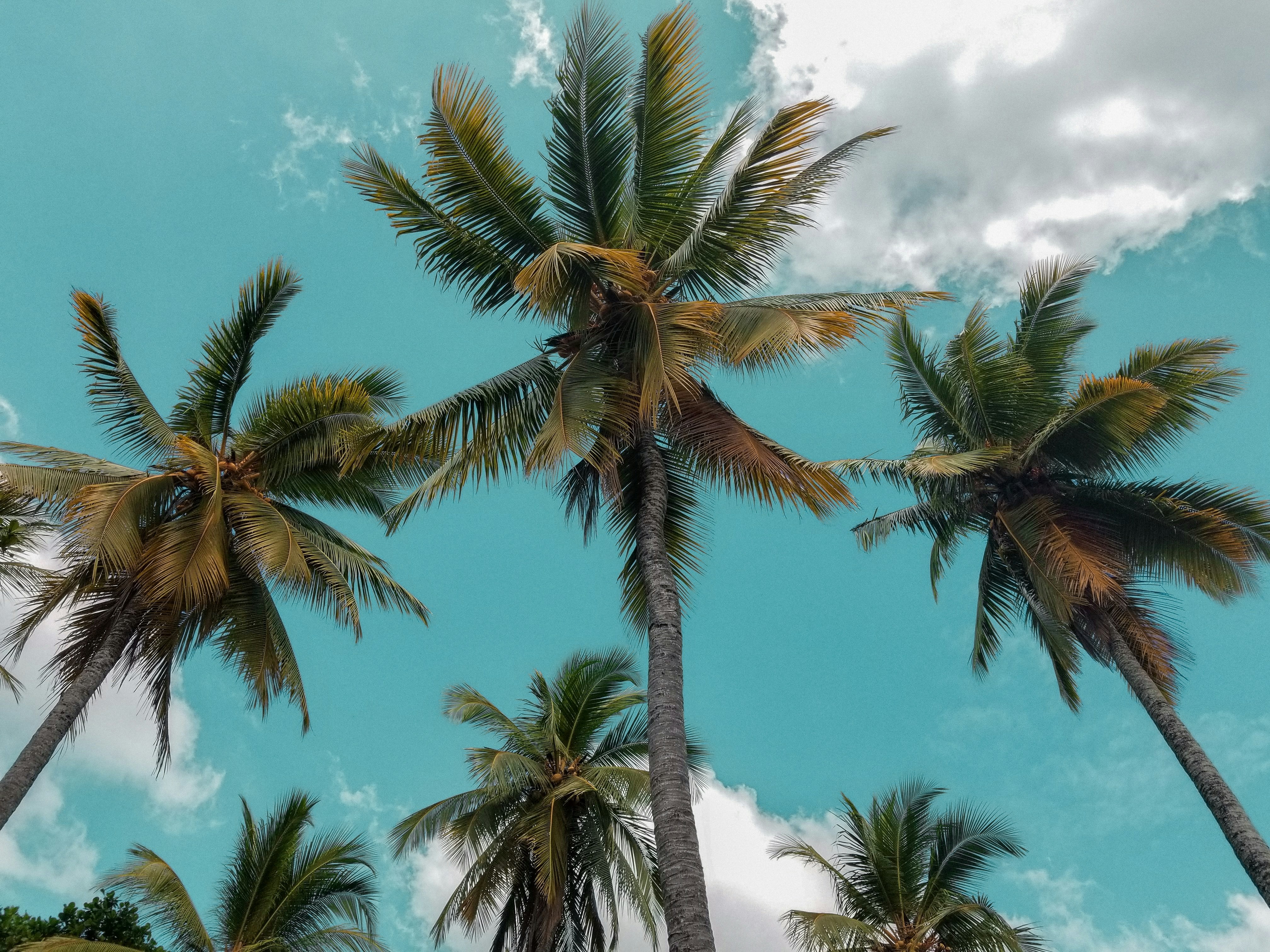
Explore Bentota - Sri Lanka Travel, Asia
Nestled along Sri Lanka’s southwestern coast, Bentota is a tropical paradise that blends golden beaches, vibrant culture, and thrilling adventures. Famous for its calm waters, luxury resorts, and scenic river estuary, Bentota has become a top destination for travelers seeking both relaxation and authentic experiences. From serene beach walks at sunrise to adrenaline-pumping water sports, this coastal town offers a perfect balance of leisure and exploration. With its proximity to Colombo and Galle, Bentota is easy to reach, making it an ideal stop for both short escapes and extended holidays.
Population: Approximately 37,000 in 2023.
Economy: Bentota’s economy thrives mainly on tourism, which drives local businesses such as hotels, restaurants, and wellness retreats. The town also benefits from fishing, coconut cultivation, and handicrafts like wood carving and batik textiles. Many residents rely on the growing demand for water sports and Ayurvedic treatments, making tourism the backbone of both income and employment in the area.
Landmarks: Famous for Bentota Beach, Bentota River Safari, and Kande Vihara Temple.
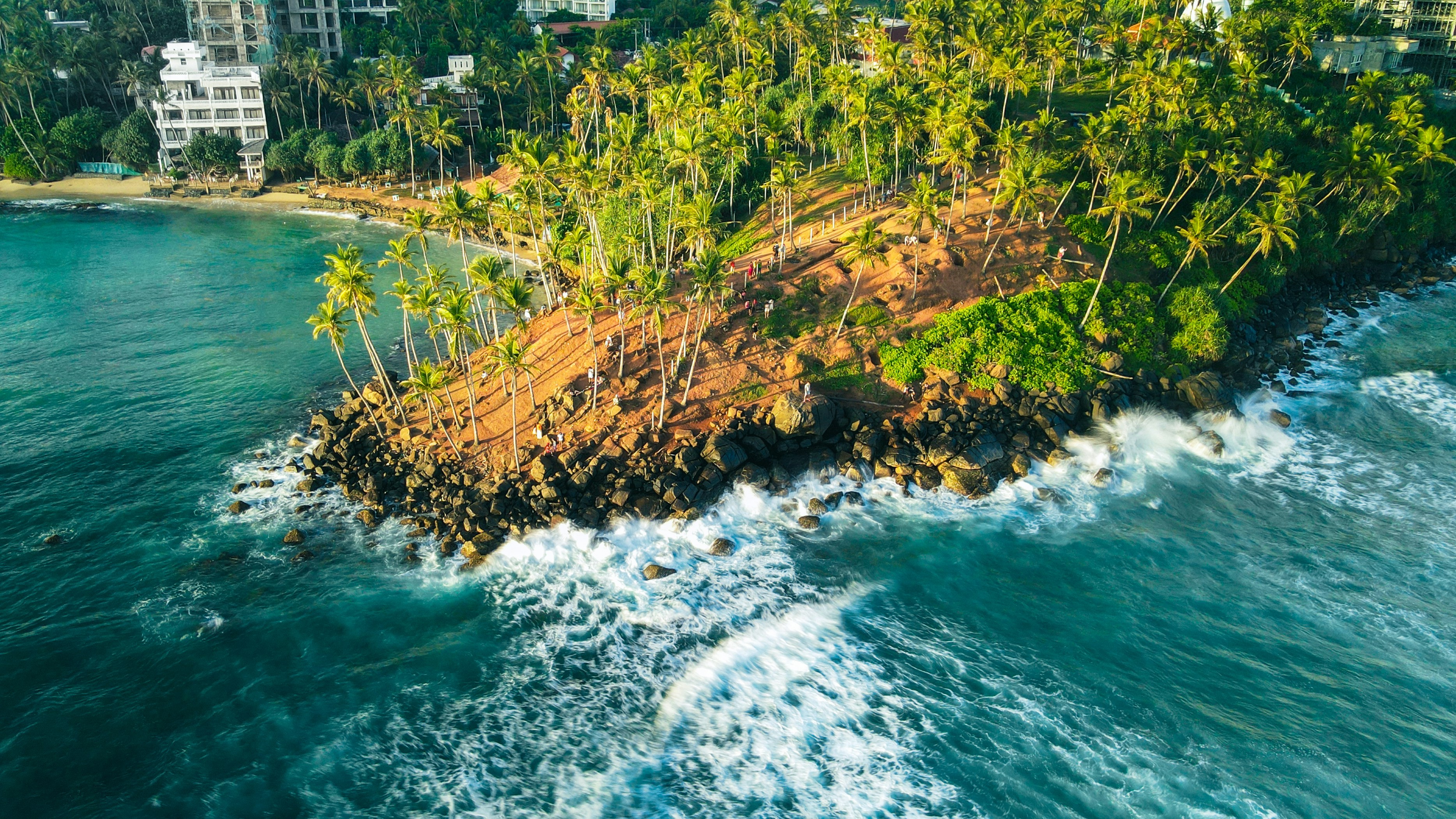
Explore Mirissa - Sri Lanka Travel, Asia
Mirissa is a charming coastal town on Sri Lanka’s southern shoreline. Known for its golden beaches, turquoise waters, and vibrant marine life, it has become a must-visit stop for travelers exploring the island. Many come for whale watching, surfing, and sunset views at Coconut Tree Hill, but Mirissa offers much more than postcard beauty. The fishing boats you see anchored by the bay carry generations of stories. Local traditions, delicious cuisine, and a laid-back rhythm of life shape every visitor’s experience.
Population: Approximately 4,700 in 2023.
Economy: Mirissa’s economy is largely shaped by its coastal location. Fishing has long been the backbone of local livelihoods, with generations relying on the Indian Ocean for income. In recent decades, tourism has become the main driver of growth, thanks to whale watching, surfing, and beachside hospitality.
Landmarks: Famous for Mirissa Beach, Coconut Tree Hill, and Parrot Rock Bridge.
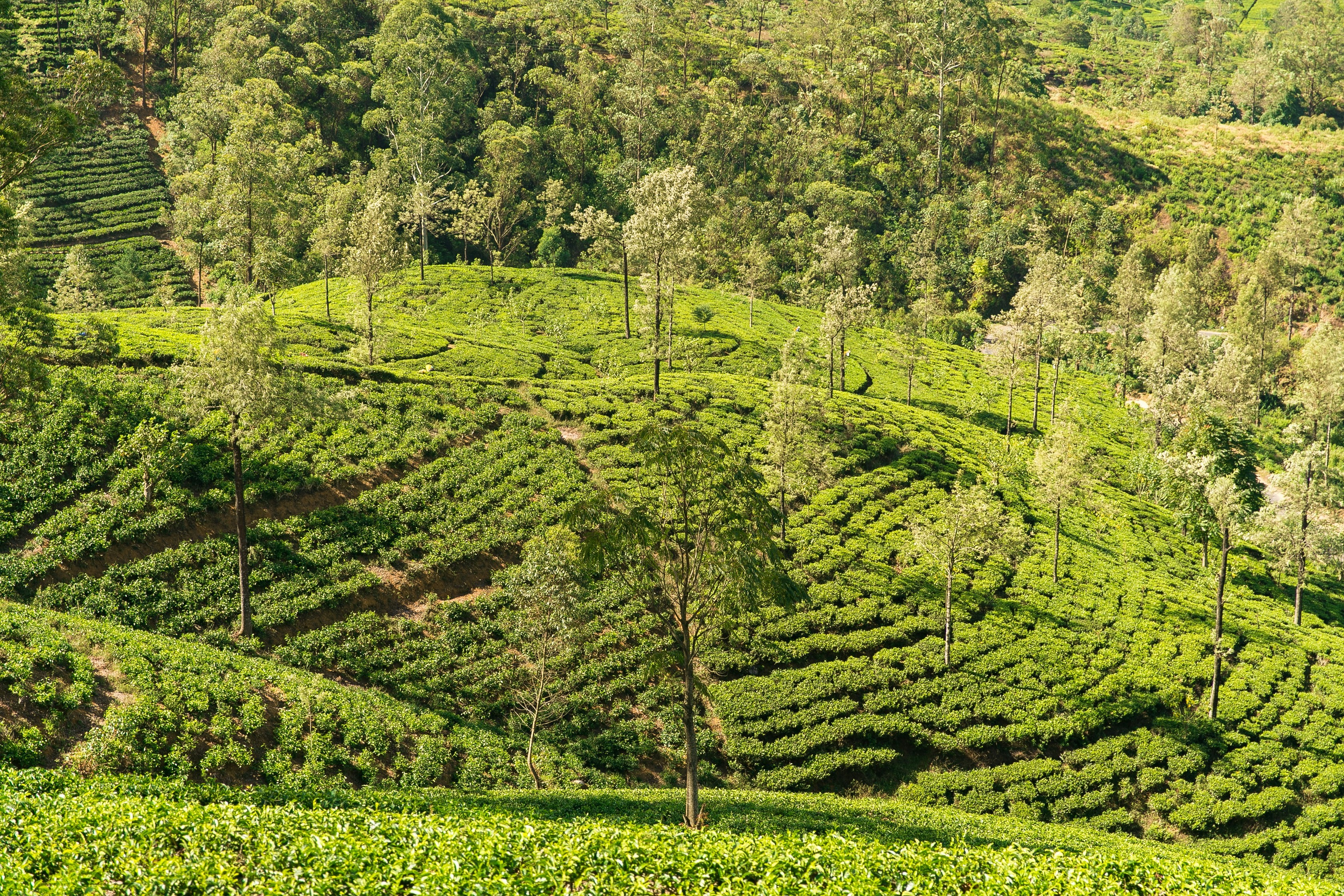
Explore Nuwara Eliya - Sri Lanka Travel, Asia
Tucked away in the Central Highlands of Sri Lanka, Nuwara Eliya is often called “Little England”. With its rolling tea plantations, cool misty mornings, and colonial charm, this mountain town feels like a step into another world. Travelers come here to breathe fresh air, walk through flower gardens, sip the finest Ceylon Tea, and enjoy a pace of life far from the island’s busy cities. Whether you’re drawn by scenic landscapes, heritage architecture, or the warmth of its people, Nuwara Eliya is a destination that blends nature, culture, and history in perfect harmony.
Population: Approximately 781,000 in 2023.
Economy: Nuwara Eliya’s economy thrives mainly on tea production, as it sits in the heart of Sri Lanka’s central highlands, famous worldwide for Ceylon Tea. The city also benefits from a growing tourism industry, attracting visitors with its colonial charm, cool climate, and scenic landscapes.
Landmarks: Famous for Gregory Lake, Hakgala Botanical Garden, and Victoria Park.
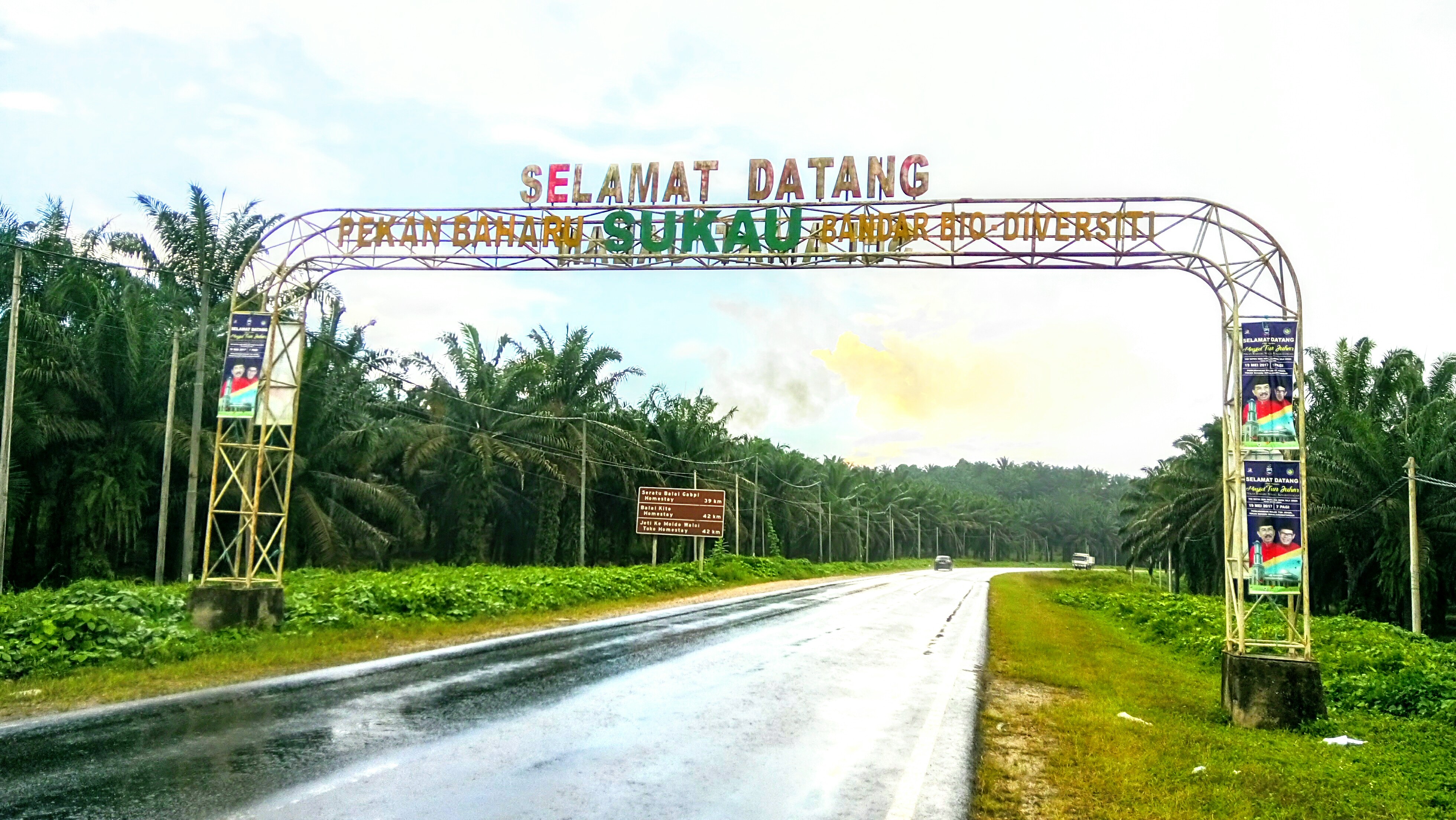
Explore Sukau - Malaysia Travel, Asia
Nestled on the banks of the Kinabatangan River in Sabah, Malaysian Borneo, Sukau is a destination where wildlife, culture, and conservation come together. Known as one of Asia’s top spots for river safaris and eco-tourism, this quiet village offers a front-row seat to encounters with Bornean orangutans, pygmy elephants, proboscis monkeys, and exotic birdlife.
Population: Approximately 1,400 in 2019.
Economy: Sukau’s economy is shaped by its riverine location and natural resources. Traditionally, the Orang Sungai community relied on fishing, small-scale farming, and forest gathering for their livelihood. Today, the village has shifted toward eco-tourism, with river cruises, jungle trekking, and homestays providing income.
Landmarks: Famous for the Kinabatangan River cruises, Gomantong Caves, and Ox-bow lakes and wetlands.
